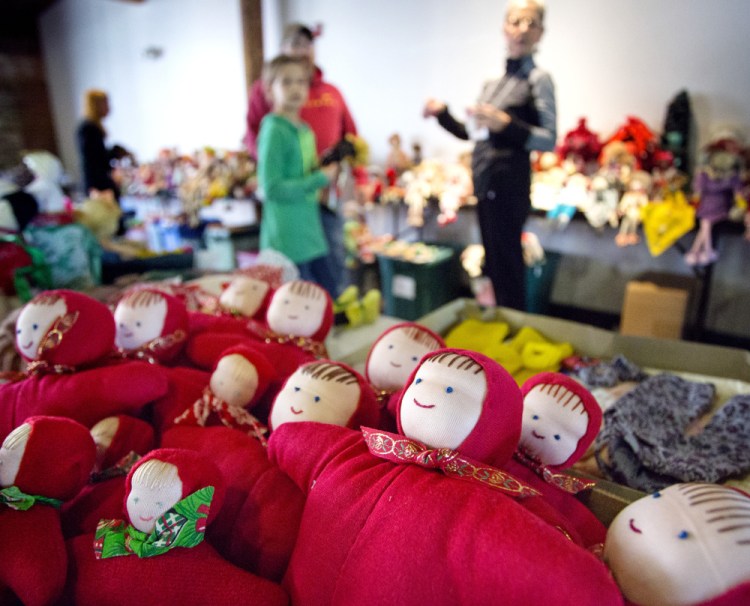LEWISTON — Museum L-A: The Story of Work and Community in Lewiston-Auburn is trying to trim down.
With a burgeoning accumulation of items and a looming loss of storage space, the museum decided to organize a sale to get rid of items that are not central to its mission of chronicling the community’s economic, social and technological history.
“We needed everything when we started but now we need the space,” said Rachel Desgrosseilliers, museum executive director.

Liette Morin of Lewiston looks through dolls from the collection of Bertha Chasse during a sale at Museum L-A. Derek Davis/Staff Photographer
Founded in 1996, the museum spent its first decade salvaging and preserving industrial artifacts from closing businesses, many of them in former mills. The result was a massive accumulation of objects, some of which had nothing to do with its focus. So on Saturday, the museum put hundreds of them on sale. Proceeds will go back to the museum, now housed at the Bates Mill Complex.
Desgrosseilliers said with the complex under development, it is only a matter of time before the museum will have to find new space, at least 5,000 square feet of it but ideally 10,000 square feet. Currently, its collection is stored all over the place, some of it not ideal for preservation, Desgrosseilliers said.
Business was brisk at Saturday’s sale.
“We have been moving a lot of stuff, from old furniture to prints of local scenes,” Desgrosseilliers said.
The coat hooks from the former St. Peter’s Elementary School, which no longer exists, flew out the door.
“It is nostalgia,” Desgrosseilliers said.

Joan Vermette of Hollis looks through photographs from a past exhibit titled “The Power of Music” during a sale at Museum L-A on Saturday. Derek Davis/Staff Photographer
Among other gems up for sale: a booklet on how to build a family fallout shelter, a box of Christmas decorations, a lava lamp and an assortment of slubbers, tall cylindrical objects used in textile manufacturing which could do double duty as a wastebasket. A box of nine votive candles and a bag of 100 percent wool were both priced at $10.
Genevieve Lysen of Lewiston picked out one of the thousands of cloth dolls donated to the museum by the late Bertha Chasse. Lysen said at $2 the doll was a bargain.
“It reminds me of the dolls we used to make at the Waldorf school in Freeport,” Lysen said.
Joan Vermette of Hollis was out of luck in her mission to acquire some point papers, which were used to translate a textile designer’ patterns onto looms. Vermette said her work as a digital designer breaking down images to the pixel level is similar to the textile designer’s. She is also descended from Franco-Americans who worked in Maine textile mills, she said. But there were no point papers for sale at the museum.
“It sounds like they are very rare,” Vermette said.
Send questions/comments to the editors.




Comments are no longer available on this story